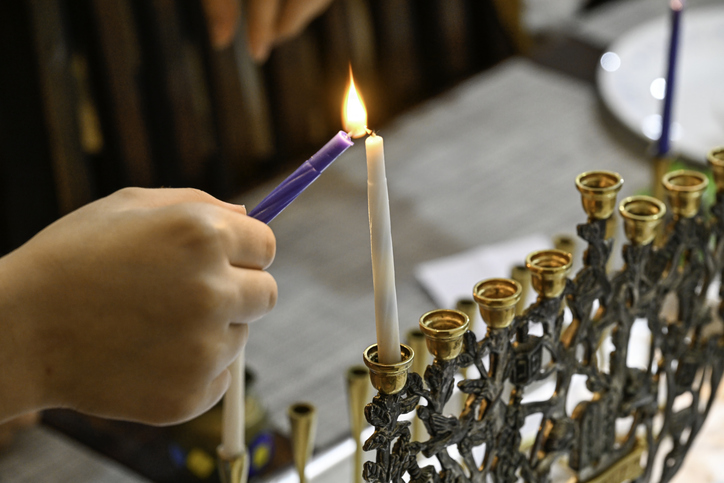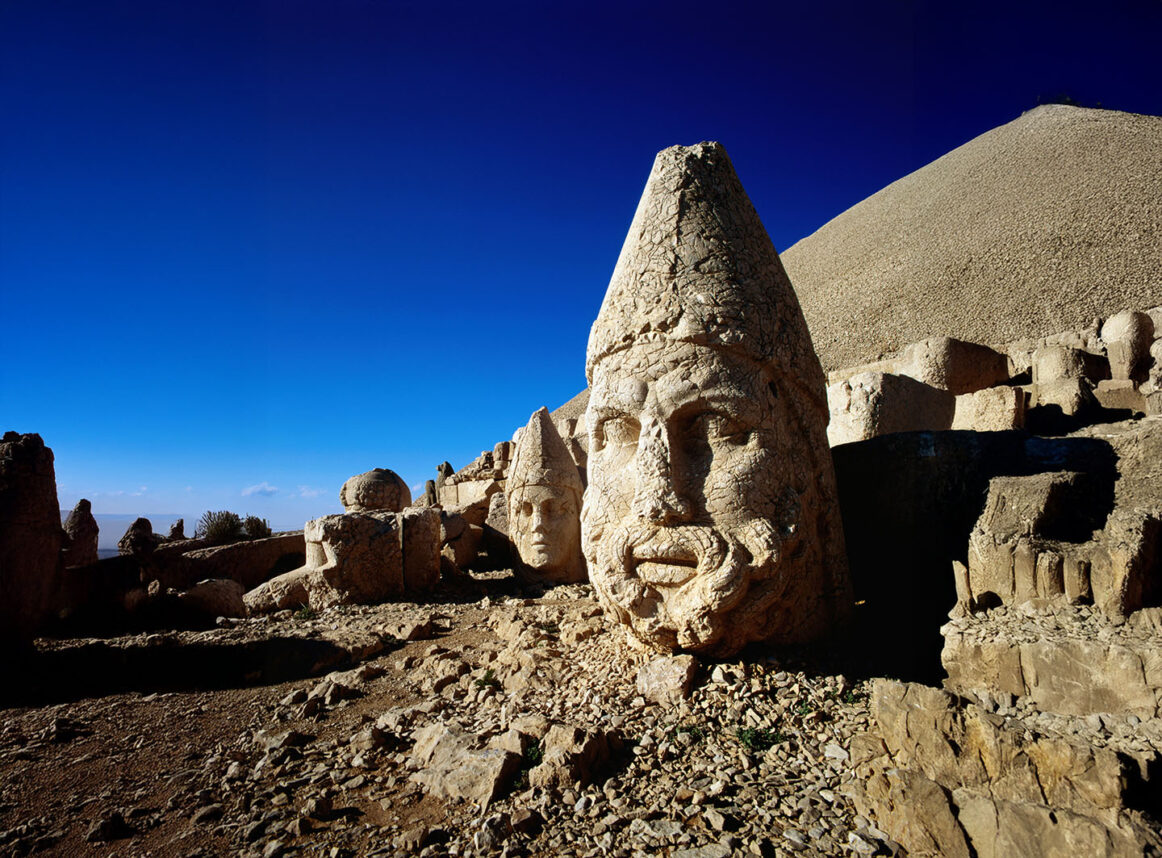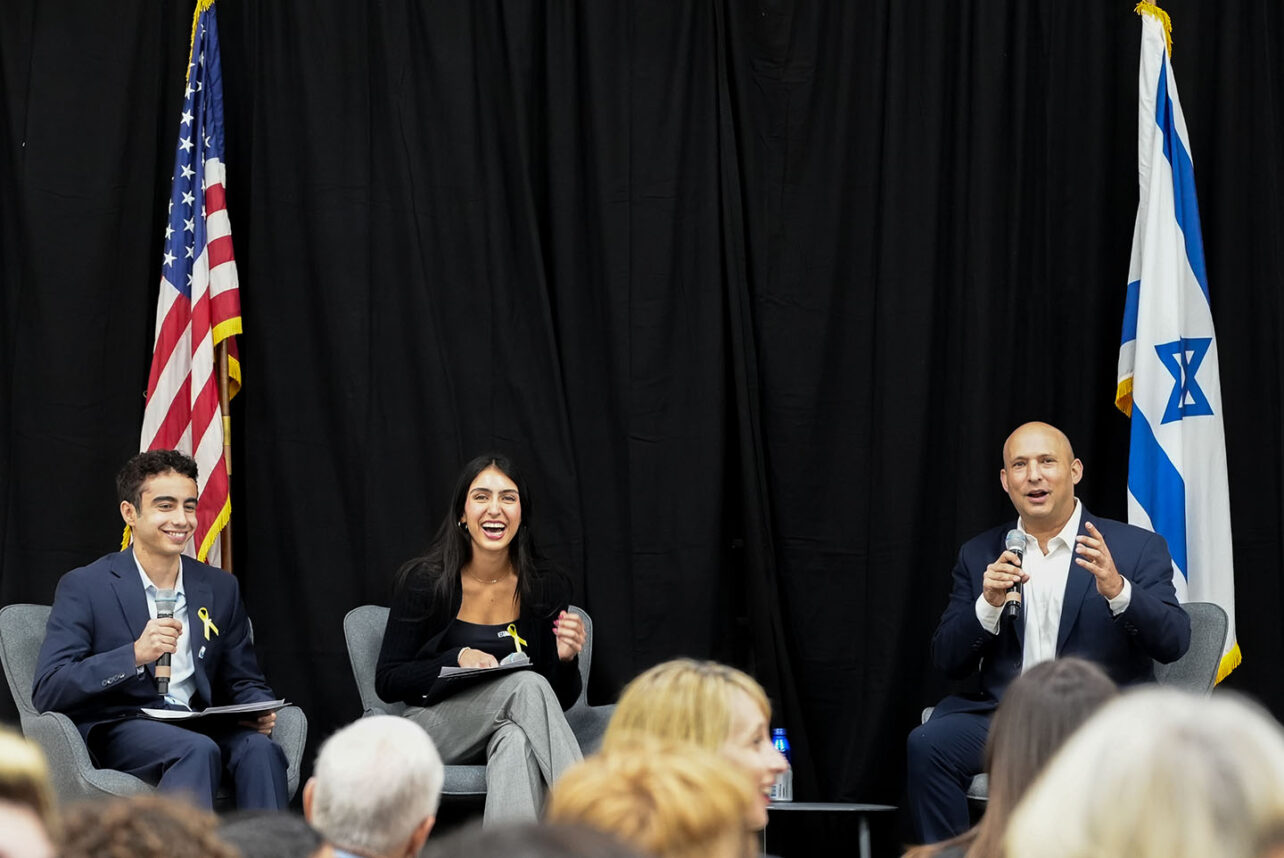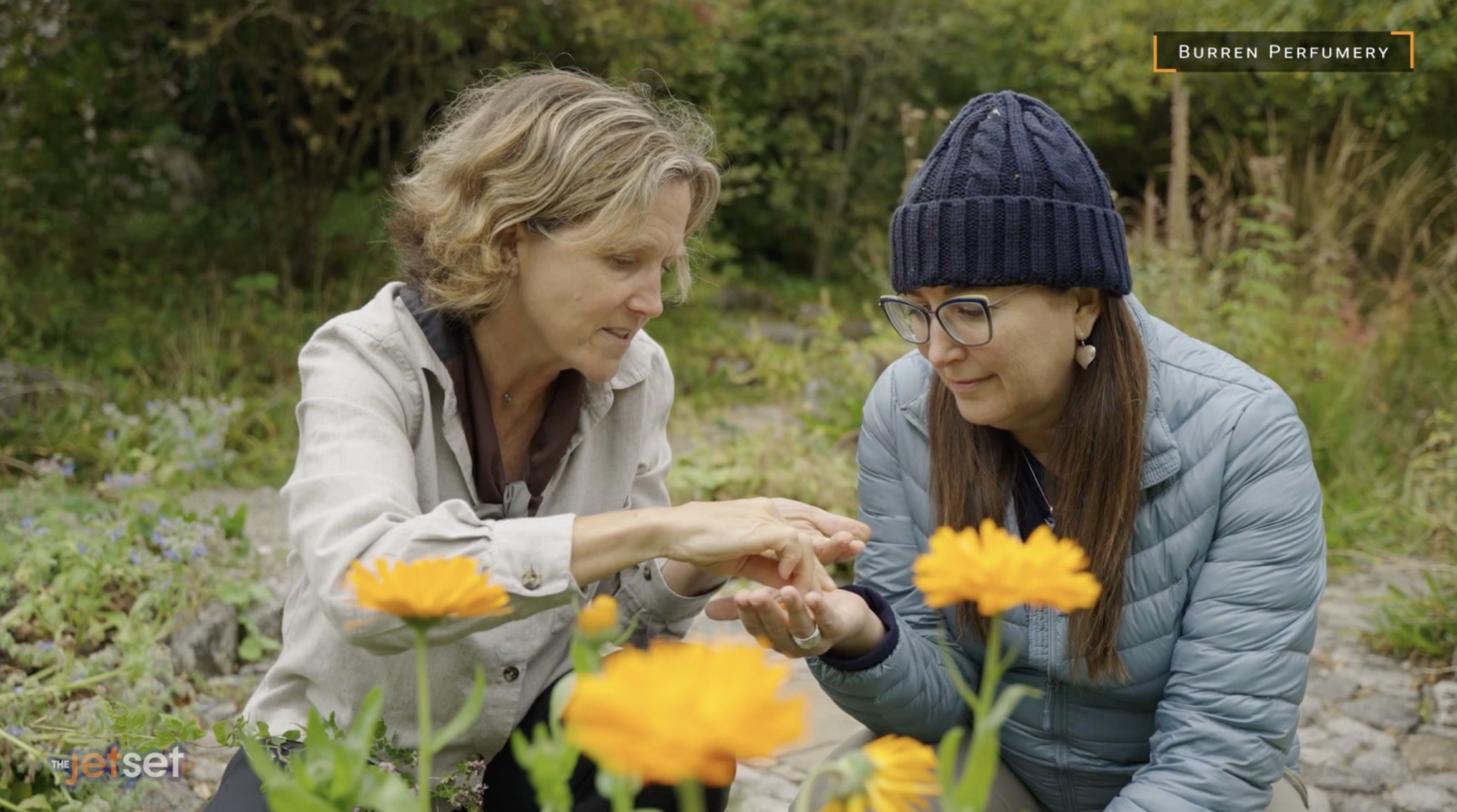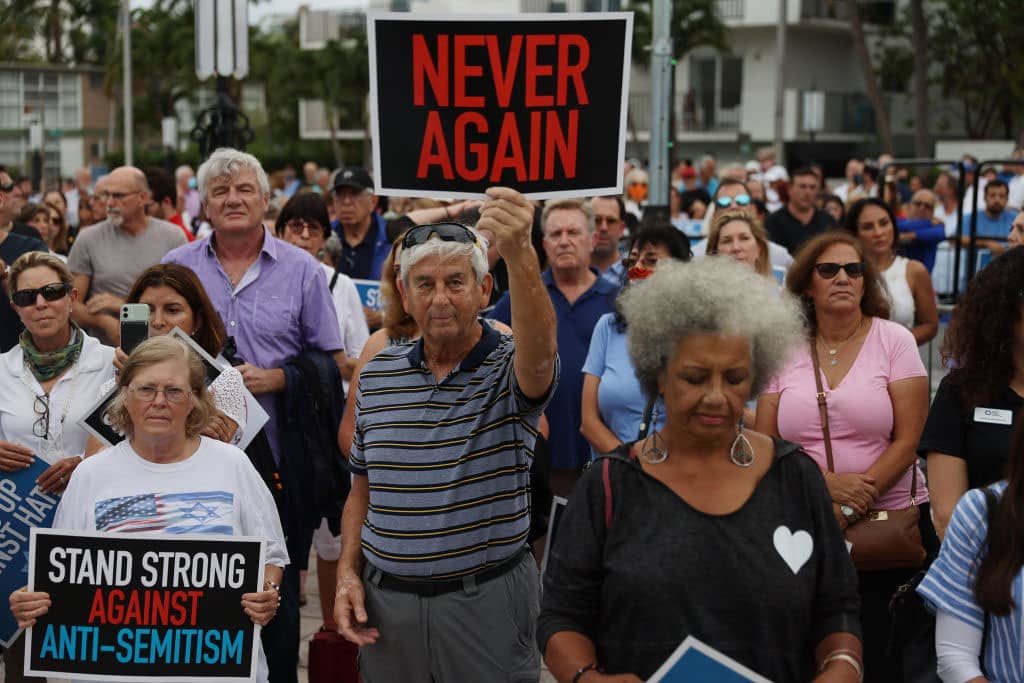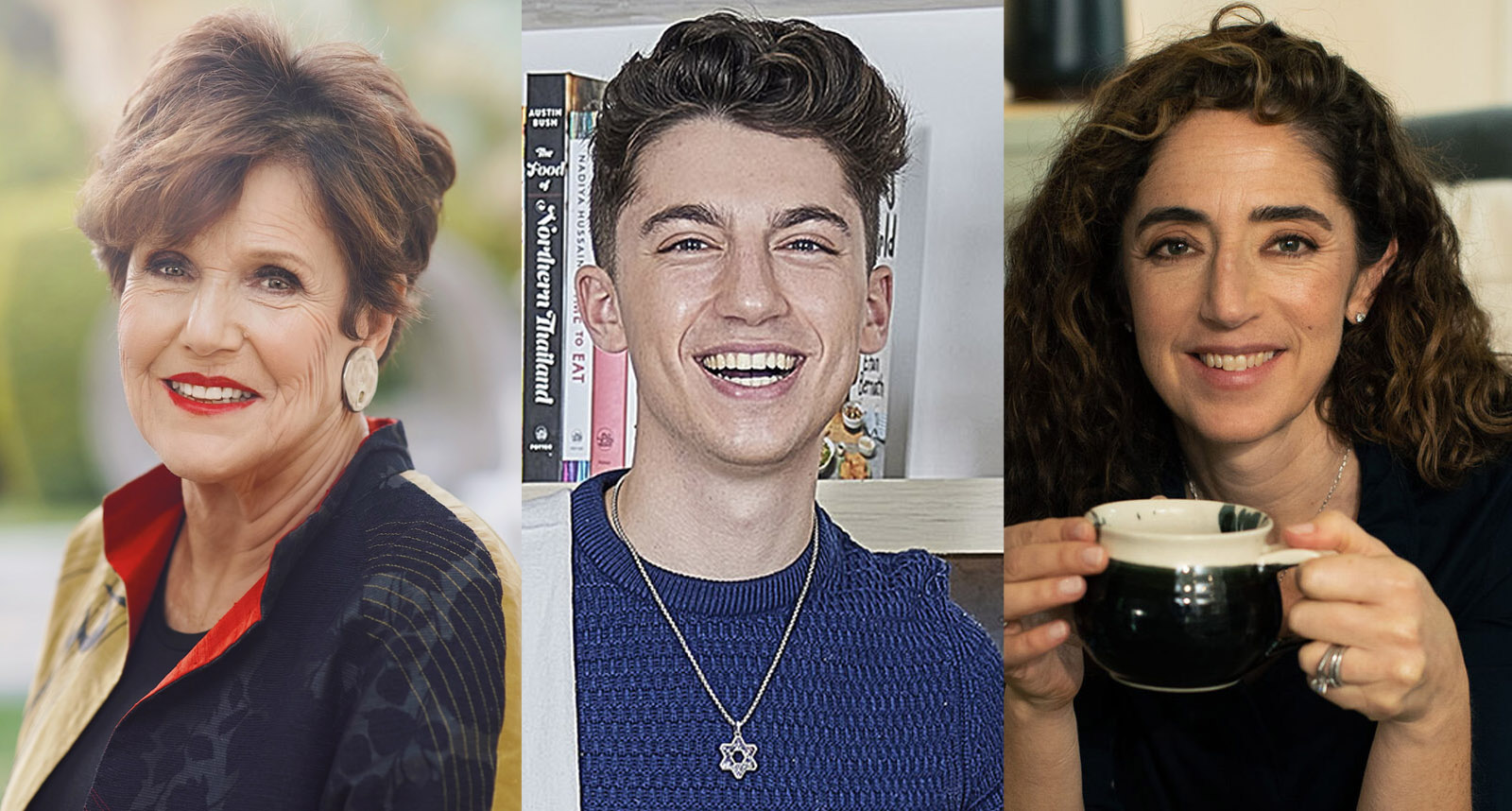Last February, nearly two years into the civil war still tearing across Syria, a group of seven wounded Syrians dragged themselves to the Israeli border, where they were picked up by the Israel Defense Forces (IDF) and rushed to the nearest hospital.
It was the first public rescue of Syrians within Israel, and reporters flocked to the Ziv Medical Center in Safed, a 40-minute drive from the Syrian border. Facing a wall of microphones, hospital director Dr. Oscar Embon dodged questions about whether the patients, all men, were fighting for or against Syrian President Bashar Assad.
“We treat patients regardless of religion, race, nationality and give the best care we can provide,” Embon told CNN.
The media blitz soon died down, but the mission kept growing. Dozens more Syrians mysteriously made their way into Israel, and three more Israeli hospitals, each with different specialties, volunteered to take in the Syrian patients, while the IDF also set up its own field hospital along the border for emergency care.
“They know where to bring the wounded now, just from ear to mouth,” said Peter Lerner, IDF spokesman for international media. “We haven’t made any public announcement about it, but they keep coming to the same places of access. It seems to be an unwritten agreement: If you need help, you know where to come.”
Among the Syrians being treated in Israel is a 15-year-old boy who lost his leg and almost lost his arm, had it not been saved by doctors at Ziv. The boy was riding in a tractor, helping deliver water to neighboring villages in Syria, when the tractor rolled over a land mine. When he woke up, he was in Israel. (The hospital will not release the boy’s name, to ensure his safety in both Israel and Syria.)
“I was surprised, and a little afraid,” the boy said in Arabic, as his social worker translated. “But when I saw people speaking Arabic, I was more relaxed.”
This 15-year-old, one of almost 20 Syrians currently hospitalized at Ziv, shares a room with two other boys — a chubby-cheeked 14-year-old whose arms and legs broke when a bomb sent him flying off the roof of his house, and a third teen who was blinded and lost a hand in another blast. White gauze fills both this patient’s eye sockets. (“I’m not sure he really understands what is happening,” Gil Maor, a spokesman for the hospital, said of the boy who lost his eyesight.)
Their hospital room opens to a balcony with a dazzling, panoramic view of the Sea of Galilee, a longtime point of geographical contention between Israel and Syria.
“I always heard that Israel was the enemy,” the 15-year-old said. “But there are a lot of good things that they give me here.”
On the morning of Oct. 21, the boys’ hospital room was crammed with nurses, social workers and press supervisors. Curious community members brought plastic bags full of snacks to the door — Israeli favorites like peanut-butter-flavored Bamba puffs and Quadratini biscuits — and tried to pop their heads in for a peek. Guarding the room and doing his best to keep the visitors at bay in the hallway, a gangly IDF soldier who didn’t look much older than the Syrian boys inside made repeated calls to his superiors, seeking approval for each new person to enter the room and each Syrian patient to be interviewed. A photographer for the Israeli newspaper Ha’aretz spent 20 minutes setting the boys up in different poses around the room, always with their faces tilted slightly away so as not to reveal their identities.
By noon, the boys all looked exhausted. “I miss my family; I miss my friends, and I miss my teachers. I miss taking the school photo,” the 14-year-old in the middle bed said, before softly requesting that he be excused from the interview. He made a sideways chopping motion with his hands and rolled over, directing his gaze out the window toward Syria.
Offering (illegal) care, as needed
The border between Israel and Syria is guarded closely by the IDF, and a new high-security fence between the two enemy countries is now 90 percent complete. However, the IDF’s official policy is to accept any wounded Syrian who can make it to the border (oftentimes with the help of an accompanying party).
“We are facilitating urgent medical aid to any Syrians who have reached the fence,” IDF spokesman Lerner said.
Some patients remain unconscious through the journey. And when they wake up in enemy territory, according to Israeli hospital staff, their faces often brim with fear.
“They’re very frightened,” said Dr. Eyal Sela, head of the ear, nose and throat department at the Western Galilee Medical Center in the far-north beach town of Nahariya. “They don’t understand what we’re saying when we talk in front of them — the whole situation is unfamiliar ground. You see it in their eyes.”
But after a week or two, Sela said, “You see that the trust is building up. They learn our faces.”
And as word of the Israeli aid operation spreads within Syria, that initial round of shock is fading.
Fares, a Christian Arab social worker at Ziv Medical Center who chooses to keep his surname out of the press, is the first face Syrian patients see upon their arrival at the hospital. During their stay in Israel, Fares also becomes the familiar face that coaches the patients through treatment, all the way up to their day of discharge.
He said patients have told him his name is circulating in Syria.
“Some come back from the same village where they told them that I was here,” Fares said. “[New arrivals] say to me, ‘Yes, they told us about you.’ ”
Sela, a facial reconstruction specialist, said he has formed very close bonds with a few of his patients. The doctor is especially fond of his very first case, a “very intelligent” agriculture student who was rushed to the Western Galilee Medical Center with a severe gunshot wound stretching from his jaw through to his lungs.
“He grew up thinking that Israel was bad and that we kill each other here,” Sela said of the patient. “Then suddenly he sees Arabs and Jews are working together as doctors, as nurses. He couldn’t figure out what was going on. He thought it was a show.”
Watching the young man’s perceptions change, Sela said, made the doctor feel, for the first time, like a sort of diplomat.
“It’s not just the medicine — you touch people, and you change people, and you change people’s perspective of you,” Sela said. “And you’re not a monster, as they saw you before.”
But while some Syrians’ personal feelings about Israel may shift after receiving life-saving treatment in the Jewish nation, they must keep the treatment a secret upon returning home. Setting foot on Israeli soil is illegal under Syrian law, and widely frowned upon, besides.
So, when IDF medics send patients back across the Syrian border, they make sure no Hebrew lettering nor Israeli logos are printed anywhere on the patients’ medical equipment or tags. In some cases — according to Sara Paperin, international liaison at the Western Galilee Medical Center — Syrians have even been sent home with forged discharge papers, made to look like they were printed at a Syrian hospital. (Paperin stressed that the Western Galilee Medical Center played no part in creating these false documents, and that all Syrian patients who come through the hospital are released to the IDF with accurate discharge papers.)
The 15-year-old at Ziv Medical Center who lost his leg in a land-mine explosion said people in Syria would be angry if they learned he went to Israel. “I prefer not to tell them,” he said.
Russian-Israeli surgeon Dr. Alexander Lerner, head of the orthopedic department at the hospital and a leading expert on limb salvation and elongation, is now in the process of building the boy a prosthetic leg. “Next week, I hope he’ll start walking,” he said. “I plan to return him to Syria on both legs.”
With more attention, more patients
The Golan Heights — the 700 square miles of disputed farmland that connects Israel to Syria — is a historically gray area surging with tension between the two countries. On Google Maps, the region is double-outlined by a tangle of dotted lines, with no clear border between Israel and Syria — illustrating almost a century of back-and-forth land grabs. To this day, a special force of United Nations workers, called the United Nations Disengagement Observer Force (UNDOF), patrols the area to keep peace. (According to a UNDOF report from March, Syrian officials accused UNDOF personnel of collaborating with the IDF to “transport across the ceasefire line of injured persons to the Israeli-occupied Golan and back.”)
“There have never been any diplomatic relations between Israel and Syria,” Foreign Ministry spokesman Yigal Palmor said. “It is legally considered an enemy state.”
Meanwhile, the other four countries that touch borders with Syria — Jordan, Turkey, Lebanon and Iraq — have collectively absorbed more than 2 million Syrian refugees since the civil war broke out, with another 125,000 fleeing to Egypt.
“Refugees tend to go to places where they speak the same language, where they have the same culture,” the IDF’s Lerner said. “So many Syrians have been told that Israel is the arch-enemy of Syria. Why would they come here?”
The only Syrian refugees that Israel has offered to take in are Palestinians — former refugees of the Israel-Palestine conflict who fled to Syria in a time of peace. But had they taken Israel up on its offer, those Palestinian refugees would have been confined to the occupied West Bank and forced to give up their refugee status, which would cut their access to U.N. aid and their hopes for a “right of return” to Israel proper.
Israel’s small Druze community, leftover from Syrian rule of the Golan Heights, has also been pressuring the Israeli government to provide refuge to their brethren on the other side of the fence. Israeli authorities have yet to issue a public response.
“There is no change in our policy as far as the border is concerned,” Lerner said. “No Syrians can pass through.”
The Syrian civil war and refugee crisis have put Israel in an awkward position, as the conflict between Syria and Israel long predates that between the Free Syrian Army and the Assad regime. However, because the Syrian rebels have temporarily set aside their beef with Israel to focus on toppling the oppressive government in their own country, the Israeli medical community has spotted an opportunity to try to plant some seeds of Israeli humanity inside Syria.
Doctors Without Borders, the premier medical aid organization operating in Syria and in surrounding refugee camps, recently urged “all states and non-state actors involved in the Syrian conflict” to devote the same urgent attention to Syria’s medical crisis as to the infamous chemical weapons attack in August that killed some 1,500 Syrians.
“The medical system — like the rest of Syrian society — has been under siege during the conflict and is no longer capable of responding to the acute and chronic medical needs of the Syrian population,” a September report from Doctors Without Borders said. The organization has also warned that health care for refugees in Jordan, Lebanon and Iraq is crumbling under extreme demand.
Israel, on its own terms, has answered that plea.
Whereas stretched-thin hospitals inside Syria are depleted of medical supplies and often targeted by the Syrian military, Israeli hospitals just over the border are able to provide patients with a full team of professionals, from medical clowns to psychiatrists, and cutting-edge treatments they might not receive elsewhere.
 As the director of Ziv Medical Center, Dr. Oscar Embon said he would never turn away a patient. “I’m glad I have the opportunity to exercise my values, which is to treat everyone regardless of religion, race — whatever. For me, it’s the natural thing to do.” Photo by Simone Wilson
As the director of Ziv Medical Center, Dr. Oscar Embon said he would never turn away a patient. “I’m glad I have the opportunity to exercise my values, which is to treat everyone regardless of religion, race — whatever. For me, it’s the natural thing to do.” Photo by Simone Wilson
One of Sela’s current patients lost his entire jaw in an explosion. “It’s totally gone,” the doctor said. “A grenade or something just took it off — the lower lip, the chin, the floor of the mouth and half of the tongue.” So the hospital has ordered a special plate from the United States and plans to reconstruct the patient’s jaw in full.
And over in Safed, Dr. Alexander Lerner at Ziv Medical Center is known for avoiding amputation at all costs.
A few months ago, an 8-year-old Syrian girl named Aya arrived at Ziv Medical Center with her mother. The woman and child had survived a bombing together, and one of Aya’s legs was almost completely blown off. But through a painstaking process of “temporary acute shortening and temporary angulation” to keep the leg alive, then “gradual realignment” to restore it to its full length, Lerner was able to salvage the limb.
“When it was her first time walking in the department, all the Israeli patients looked at her and started clapping,” Lerner said in a thick Russian accent. “I’ve seen very many interesting situations, but it’s the first time I’ve seen this kind of applause for a small girl walking.”
Aya boarded the IDF ambulance for Syria about a month ago, but she’s become something of a legend at Ziv. Above Lerner’s desk is a picture of a vase of flowers that the young survivor made for him, along with an inscription that she asked her nurse to write in Hebrew: “Dear Dr. Lerner,” it reads, “Thank you for your care. God will be with you and he will guard you.”
Israel has a rare chance to provide world-class health care to a war-torn neighbor, hospital director Embon said. “We try to save limbs. This is the modern thing to do — the right thing to do. The Red Cross is used to amputations. You just cut it, put in a suture, and you can release the patient in two days. And probably if you don’t have the means, this is the right thing to do. But the Red Cross was surprised to see that we are trying to save limbs and doing a lot more modern surgeries.”
Syrian hospitals seem to be catching wind. Two men in their 20s under Sela’s care at the Western Galilee Medical Center told the Jewish Journal that they were transferred to Israel by a hospital in Syria, somewhat against their wishes. And another two patients recently arrived at Ziv with doctor’s notes — one blood-splattered — written in Arabic, pinned to their clothing. One of the men was suffering from a bullet wound through his chest and shrapnel in his diaphragm.
“There was no possibility to suture his liver, and pressure bandaging was applied to his stomach,” his note read. “Please do what is required and thank you in advance.”
Said Embon, director of Ziv Medical Center: “As a physician, I believe in the universality of health care and medicine. And as an Israeli, I believe that we should have peace — and if we are contributing to changing how our neighbors see us, maybe we can bring peace to the area one day earlier.”
One year into the Syrian civil war, Israeli public-affairs consultant Lenny Ben-David hinted at the potential impact of such an operation in an op-ed for the Times of Israel.
“If there’s a tiny chance for coexistence with the post-Assad government of Syria and if Syria doesn’t shatter into ethnic satrapies,” he wrote, “a life-saving medical facility along the Israel-Syrian border may be a good place to start a coexistence process.”
According to the IDF, the medical aid program for Syrians in Israel didn’t begin until early 2013, simply because up to that point, no wounded Syrians had turned to Israel for help. But earlier this year, the IDF said, violence within Syria began to spread to villages near the Israeli border — thus driving Syrians to seek treatment at the fence.
Slowly but reliably, global press outlets picked up on the unlikely story.
“In March, only the director of the hospital and maybe the physicians that were interacting with the Syrian patients knew about it,” said Paperin, international liaison at the Western Galilee Medical Center. “I got involved in June — and since then, that’s really all we’ve been handling here.” Before the influx of Syrians, Paperin’s job consisted mainly of overseeing medical tourism, a booming million-dollar industry in Israel. Now, the young Chicago native is responsible for overseeing a constant rotation of Syrian war casualties — and introducing them to dozens of journalists eager to interview the survivors in a rare cocoon of safety.
At first, Israeli reporters began visiting Syrian patients at a slow trickle, Paperin said. But in August, a big New York Times piece on young Syrian children being treated at the Western Galilee Medical Center “was really the big burst in the dam. All of a sudden, within a few days of it being published, a tsunami of reporters showed up.”
Maor, a spokesman for Ziv Medical Center, said the same: “We had times where there were three or four media crews here the whole week.”
With the spike in press coverage came more waves of wounded Syrians.
The IDF has since set up a well-oiled distribution system for Syrian patients who make it to the border: Those with less-serious injuries are patched up by mobile IDF medical teams along the border, or treated at the IDF field hospital, and returned to Syria. Those with serious wounds to the torso and limbs are transferred to Ziv Medical Center in nearby Safed. Those with serious head injuries are driven a couple of hours west to the Western Galilee Medical Center in Nahariya. And the most critical patients — only 20 so far — are transferred to the Rambam Medical Center in Haifa.
One woman taken to Rambam, for example, had a piece of shrapnel removed from inside her heart.
“This is the path that all Syrian patients come through,” said Paperin, leading a reporter down a long hall at the Western Galilee Medical Center, its walls painted a calming eggshell and turquoise, and into the hospital’s shock room.
“The connection between the hospital and the IDF starts like this: They pick up the phone and they say, ‘We’re transporting X number of patients — we’ll be there soon,’ ” Paperin said. “But there’s no information about age, or gender, or injury. So the first step is always in preparing the shock room for resuscitation.” From there, patients head to the ICU and — once they’re stabilized — to the hospital ward that best suits their injuries.
The hasbara challenge
From the start, Israel’s normally pushy hasbara (public relations) detail has seemed unsure of how to handle the Syrian issue. The same muddled elements of the Syrian civil war that complicate larger international aid efforts — including the risk of funding terrorist groups mixed in with the rebels — have proven even more complex for Israel, a grave enemy both of Assad and terrorist factions in the region.
 A hurried and blood-stained doctor’s note arrived from Syria with one unconscious patient, outlining his injuries and what little treatment he had already received. Photo by Simone Wilson
A hurried and blood-stained doctor’s note arrived from Syria with one unconscious patient, outlining his injuries and what little treatment he had already received. Photo by Simone Wilson
In September, the IDF permitted a single newspaper, conservative Israeli daily Yediot Aharonot, to speak to the head of the IDF field hospital, Dr. Ofer Merin.
When the Jewish Journal requested access to the hospital and an interview with Merin, a lieutenant at the IDF spokesperson’s office wrote in an e-mail: “At this point, the medical treatment center (as well as staff, patients, etc.) is not open to media coverage.” She later added that the Yediot piece “caused significant internal controversy” within the IDF.
New York Times reporter Isabel Kershner, likewise, told the Jewish Daily Forward in an interview that she faced a ton of pushback from the IDF while writing her piece on Syrian children in Israeli hospitals.
Israel’s hasbara jitters may originate from a fear of looking like the country is taking sides in the conflict, after the great pains that the prime minister’s office has taken not to get involved.
Various Arabic-language news outlets throughout the Middle East have accused Israel of indirectly supporting the rebels through medical rehabilitation: Pointed headlines have included “Israeli hospital treats 17 rebel militants” and “Free Syrian Army wounded being treated in Israeli hospitals.” And Egyptian outlet Egy Press wrote last month that Ziv Medical Center in Safed had become “the first resort of the terrorist factions in Syria to receive treatment and rehabilitation before returning to complete their terrorism on Syrian territory.”
An anonymous patient who said he was part of the Free Syrian Army told France 24: “The [Syrian rebel] fighters take the patients without carrying weapons. They put us on a particular spot where the Israeli army can see us. Then the Israelis come and take us. To be honest, I was shocked that Israel took us in.”
The strongly worded French article suggested that Israel’s humanitarian effort could be its stealthy way of intervening against Assad.
And the speculation is not unfounded: No Syrian patient at an Israeli hospital has ever claimed allegiance to the Assad regime in an interview with the press. And while plenty of wounded women and children have passed through Israel, the majority of patients are still men. (Seventy-seven percent of the patients at Ziv Medical Center, for instance, have been males over the age of 18.)
Israeli officials appear equal parts proud and paranoid. Press supervisors at the hospitals hosting Syrians are eager to show reporters around but steer them away from political questions and only allow them access to certain patients. Throughout these tours, the spokespeople stress that they do not ask — and do not care — if patients were fighting in the war, nor which side they were fighting on.
Media outlets are asked not to print Syrian patients’ names or identities. Not only will this put them at risk of persecution inside Syria for seeking Israeli care, Maor said, but the community surrounding the hospital — a mix of mainly Muslim and Christian Arabs, Jewish Israelis and Druze — have charged opinions about, and even allegiances to, the two camps in Syria.
Inevitably, given the deep roots of the Israeli-Syrian conflict and the greater Israeli-Arab conflict in the Middle East, there is still much public skepticism surrounding the operation. One Lebanese news site accused Israel of “exploiting this matter in the media, in order to promote the image of humanity about them.”
But, in general, the Western media has embraced the Israeli initiative as pure.
It’s one of the few positive Israeli news events that the Israeli Foreign Ministry has not helped promote at all — perhaps making it that much more attractive to reporters.
“Do we really have to be concerned about our image when we’re giving therapy to children who would be left to die?” Paperin asked. “From this hospital’s standpoint, you can’t make Israel the villain when that’s all we’re doing.”
Merin, commander of the IDF field hospital, told Yediot Aharonot: “I realize that we’re not changing the Middle East here,” he said, “but maybe we can make a small difference in how we are perceived, and that’s certainly worth something.”
However, the Israeli government has been reluctant to pay the price of the good press and goodwill. Hospital officials told the Jewish Journal that the Ministry of Health and the Ministry of Defense are still arguing over who will back the Syrians’ hospital bills, which have so far amounted to a combined $5.5 million, according to hospital estimates.
When asked about the dispute, Defense Ministry spokeswoman Myriam Nahon said only: “No comment.” And the spokesperson’s office for the Health Ministry responded: “The issue will be discussed soon with the director general of the prime minister’s office.”
(Those are just the costs that Israeli hospitals can temporarily absorb. Extra hardware for wounded Syrians, such as prosthetic limbs and wheelchairs, which must be paid for upfront, are purchased through private funds hosted by each hospital. Donations can be made to Ziv Medical Center and the Western Galilee Medical Center at ziv.org.il and wgh.org.il, respectively. )
Israeli news station Channel 2 witnessed similar hesitation from the Israeli government last year while accompanying a private Israeli aid mission to Syrian refugee camps along the Syria-Jordan border. Aid workers brought a letter from medical-tourism officials, offering a pro-bono eye surgery for a Syrian man that would help him see again. But soon after, Channel 2 reported, the Israeli Ministry of Interior rescinded the offer.
“That’s Israel: One hand extended, the other blocks the way,” said a Channel 2 reporter, who tagged along on the mission.
Later in the broadcast, one Israeli aid worker explained: “When we come to help [Syrian refugees], I look at them and think, ‘If there was war between us now, I’d aim my rifle at him, ready to fire.’ He’d kill me or I’d kill him. For now, I extend my hand to help him. As time goes on, will we shake hands or will we keep fighting? You don’t know what will happen. Do I make him healthy now so later he can take up his weapon against me?”
For Embon, director of Ziv Medical Center, in a humanitarian crisis like the one unfolding in Syria, those questions become irrelevant.
“I am aware that not all the patients we treat are loving us and changing their minds [about Israel],” the hospital director said.
“This is not a thing we do because we want to change them. We do this because we know that we have to do it — this is our job.”






